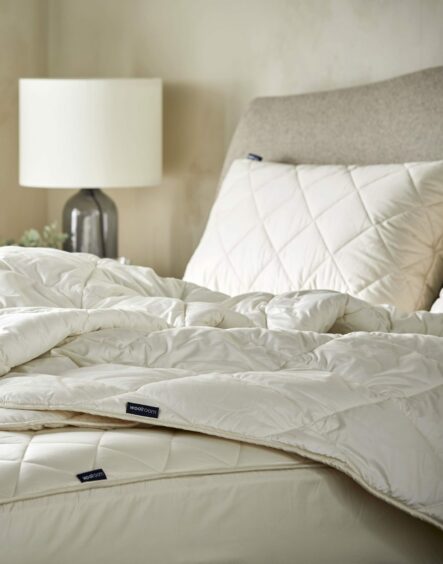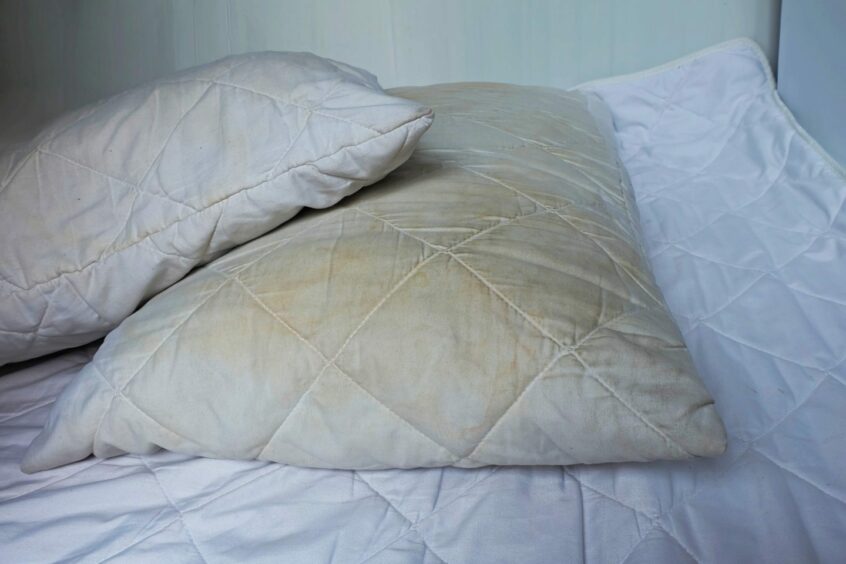It’s the season for cosying up in bed. But have you ever thought about how often bed sheets, duvets and pillows need changing – and if keeping them for too long could affect your health?
Well, according to the experts, you might want to refresh your bedding more often than you think!
Keeping duvets and pillows too long could make health problems such as allergies worse.
And not changing your bed sheets often enough can cause ‘sick bed syndrome’.
But how often is best for each item? And does it vary depending on what your duvet and pillows are made of?
Here’s what you need to know. Take our polls below to tell us how often you change yours, too.
Certain types of pillows last longer than others, say experts, due to the materials used in production.
For instance, antimicrobial textiles like linen, wool, and hemp offer natural defence against bacteria, mildew, mould, and other microbes.
When to replace your pillow
Chris Tattersall, sleep expert and managing director at The Woolroom explains:
“Generally, you’ll be able to tell when it’s time to replace your pillow, however I always recommend replacing them every one to two years.
“They get worn out surprisingly quickly, as on average, the pillow does its job for 2,500 hours a year (around 100 days).”
Fabio Perrotta, director at Dreams, agrees: “To get the most out of your pillows, it’s best to replace them at least once every two years.
“This is because over time there will be a build‐up of dust mites and the pillow is most likely to have lost a lot of its elasticity, meaning it won’t provide adequate support.”
How often should you replace your duvet?
Fabio says replacing duvets every two to five years is best for health. Using a protector, which can be washed to protect from stains and dust mites, can extend that.
Chris adds: “Like pillows, if duvets are filled with more natural fibres, they won’t need replacing so often, for example wool is self-cleaning.
“Moreover, having a washable duvet or pillow saves the need for regular replacing.”
Test pillows to tell when it’s time for a change
With pillows, Chris says: “The obvious signs include it starting to smell, turning yellow or stains – this will be from sweat.
“Alternatively, your pillow may begin to cause you discomfort with neck or shoulder aches, leading to headaches.”
A good test, he says, is to fold your pillow in half and let go. If it remains folded, the pillow needs replacing, as the filling has lost its support, and will not ‘spring’ back.
“And if duvets feel thin and limp due to filling being compressed, they’re unable to trap air and maintain your body temperature correctly,” explains Chris.
How often should you change your bed sheets?
“Every night we shed hair, dead skin, and body oil that your bedding absorbs. These combined with natural perspiration create the perfect environment for dust mites,” Chris adds.
He says this could impact those with asthma, and could lead to irritated eyes, a runny nose and disrupted sleep.
Dr Deborah Lee from Dr Fox Online Pharmacy says a surprising cause of sickness bugs could be your own bed.
“Not washing your sheets can cause ‘sick bed syndrome’,” she explains.
“A warm bed containing dust mites, shed skin, other body debris, and faecal contamination, provides a welcome environment for bacteria and viruses to grow and reproduce.”
Deborah recommends changing sheets “once a week, or more often if you let pets sleep on your bed. If you have asthma or allergies you should wash your sheets once every three to four days.”.















Conversation